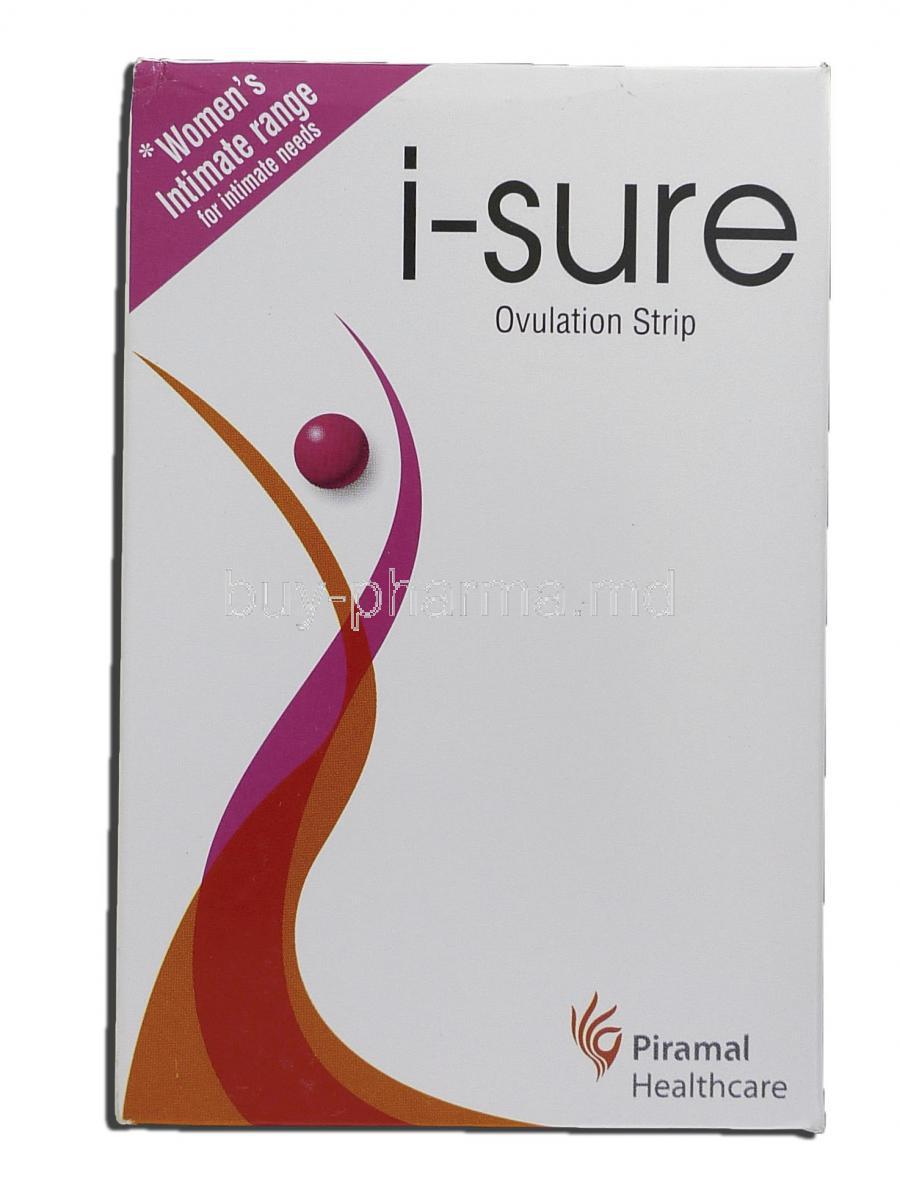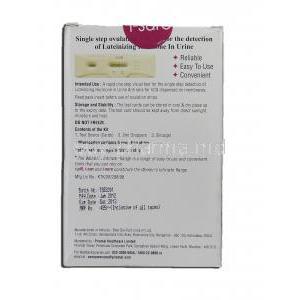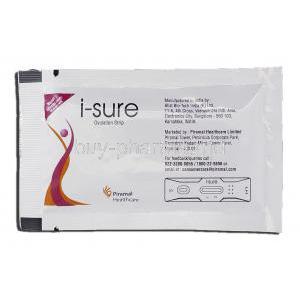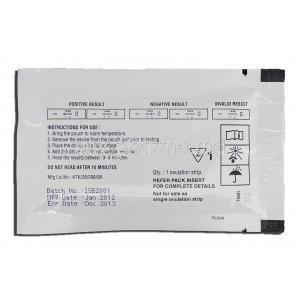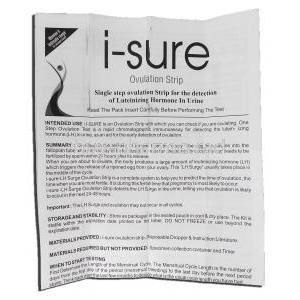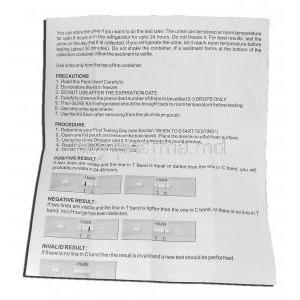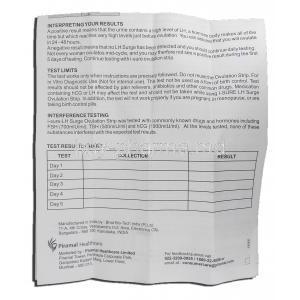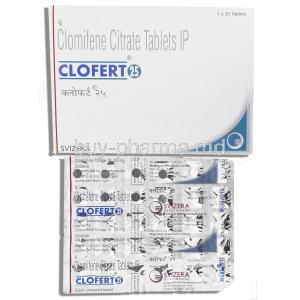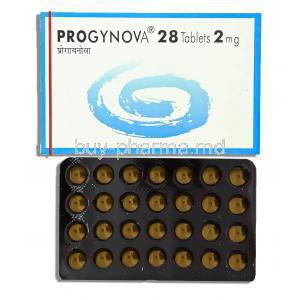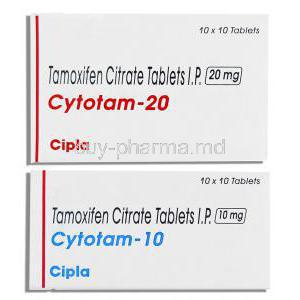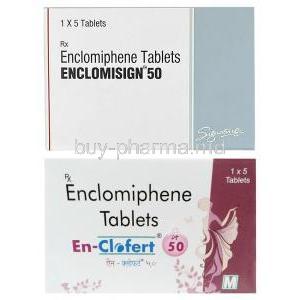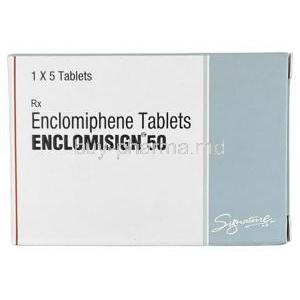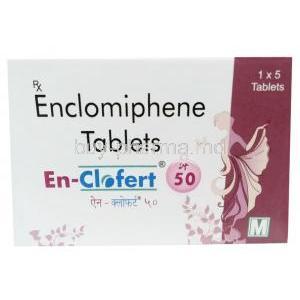I - Sure Ovulation Strip
- 1. Introduction to I-Sure Ovulation Strip
- 2. Medical and Practical Uses of I-Sure Ovulation Strip
- 3. How I-Sure Ovulation Strip Works
- 4. Composition and Materials of the Test Strip
- 5. Instructions for Use and Dosage Guidelines
- 6. Storage Instructions and Shelf Life
- 7. Common and Rare Side Effects
- 8. Warnings and Contraindications
- 9. Important Precautions and Handling Instructions
- 10. Interactions with Medications and Medical Conditions
- 11. Administration in Specific Populations
- 12. Overuse and Misuse Scenarios
1. Introduction to I-Sure Ovulation Strip
Overview of I-Sure Ovulation Strip
I-Sure Ovulation Strip is a user-friendly, home-based diagnostic tool designed to help women determine their most fertile window. By detecting the luteinizing hormone (LH) surge in urine, the strip serves as a reliable predictor of ovulation, aiding women in timing intercourse for conception.
Importance of Ovulation Tracking in Fertility Management
Accurate ovulation tracking is a cornerstone of fertility planning. Understanding the fertile window enhances the likelihood of successful conception. For women with regular or irregular cycles, an ovulation test like I-Sure removes guesswork and empowers them with real-time reproductive insights.

Comparison with Other Ovulation Prediction Methods
Unlike basal body temperature (BBT) charting or calendar-based apps, which provide retrospective or generalized predictions, I-Sure delivers a real-time assessment of ovulation by detecting a physiological hormone surge. This makes it more precise and actionable for immediate fertility decisions.
Target Users: Women Planning Conception
I-Sure is ideal for women actively trying to conceive, especially those seeking a natural method to optimize timing. It also benefits those undergoing fertility evaluations or wanting to better understand their menstrual patterns.
2. Medical and Practical Uses of I-Sure Ovulation Strip
Primary Use: Predicting Ovulation for Natural Conception
The primary application of I-Sure is to identify the ovulatory phase by detecting a sharp rise in LH, typically occurring 24-36 hours before ovulation. This enables couples to time intercourse during the most fertile period.
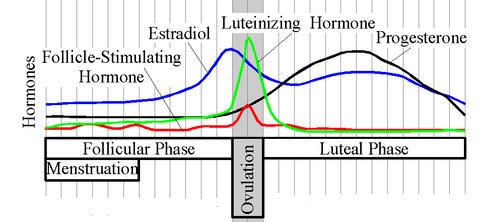
Role in Fertility Monitoring for Assisted Reproductive Technologies (ART)
For patients undergoing ART procedures such as intrauterine insemination (IUI) or timed intercourse with ovarian stimulation, I-Sure provides a convenient adjunct to clinical hormone monitoring.

Off-Label Use: Cycle Tracking for Hormonal Imbalance Detection
Outside of fertility planning, some use the test strips for identifying irregularities in LH patterns, which may signal hormonal dysfunction or conditions such as polycystic ovary syndrome (PCOS).
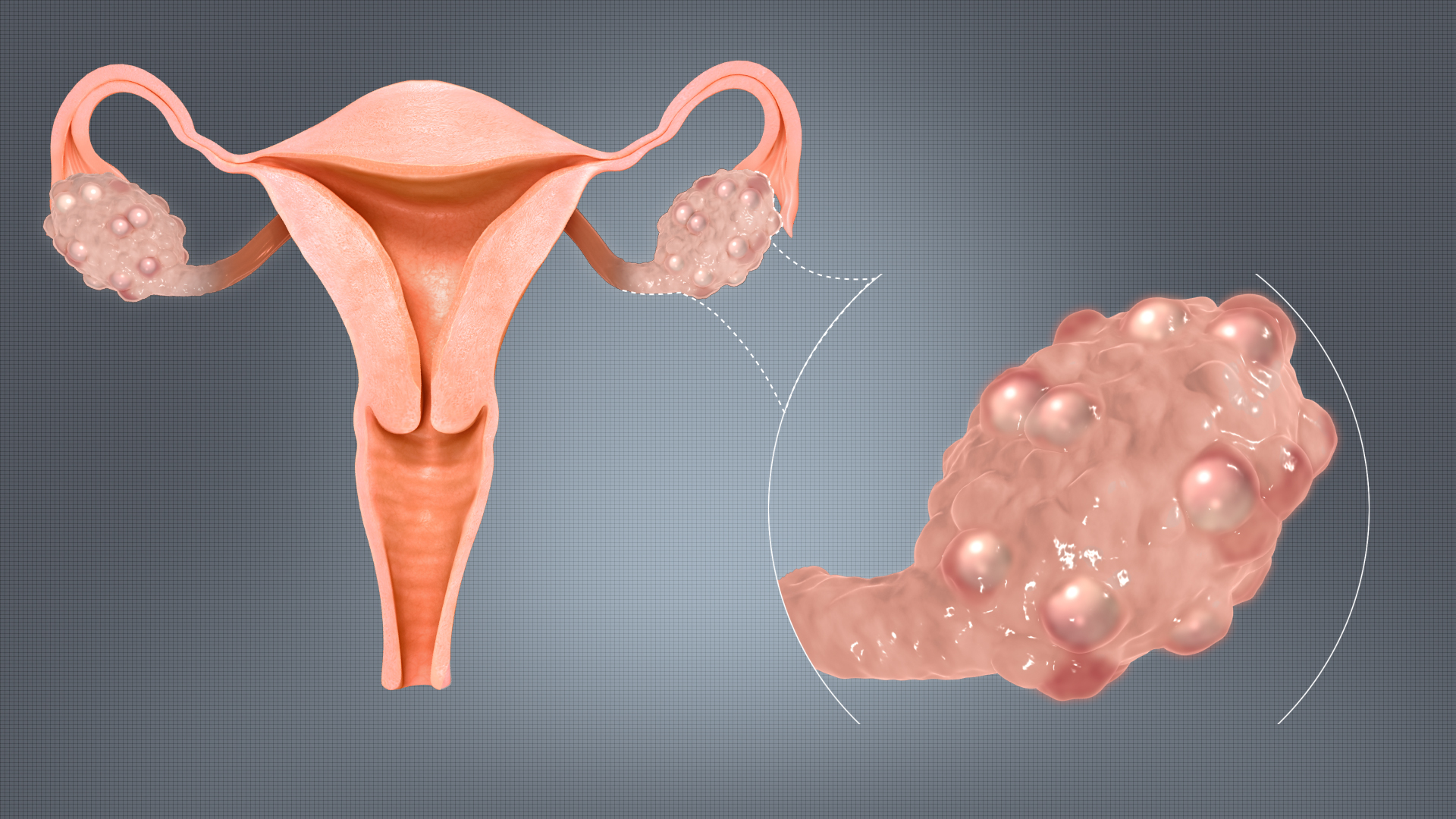
Use in Diagnosing Ovulatory Disorders
I-Sure may assist healthcare providers in evaluating anovulation or oligo-ovulation when used in conjunction with clinical assessments and hormone panels.
3. How I-Sure Ovulation Strip Works
Scientific Principle: Detection of Luteinizing Hormone (LH) Surge in Urine
The strip functions by capturing LH molecules in a urine sample via a monoclonal antibody reaction on the test membrane. The presence of LH beyond a threshold concentration triggers a visible colored line.
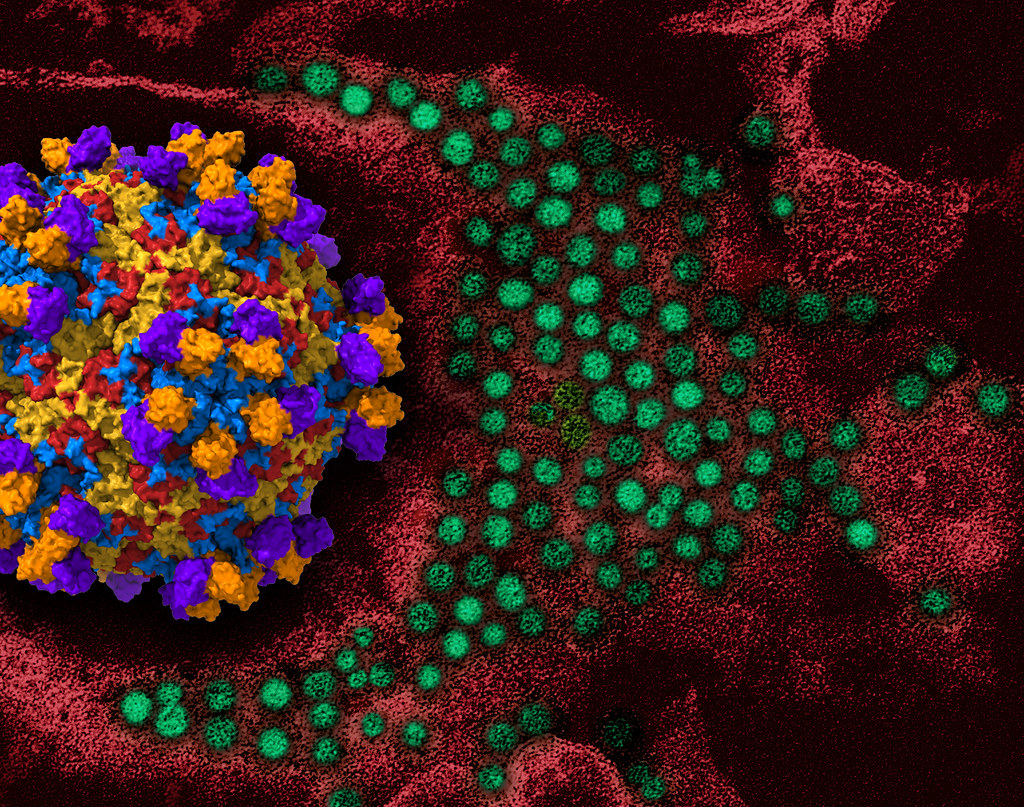
Hormonal Cycle and Timing of Ovulation
In a typical cycle, LH surges mid-cycle to trigger the release of a mature egg. This surge marks the imminent ovulation period, the most fertile phase of the cycle.
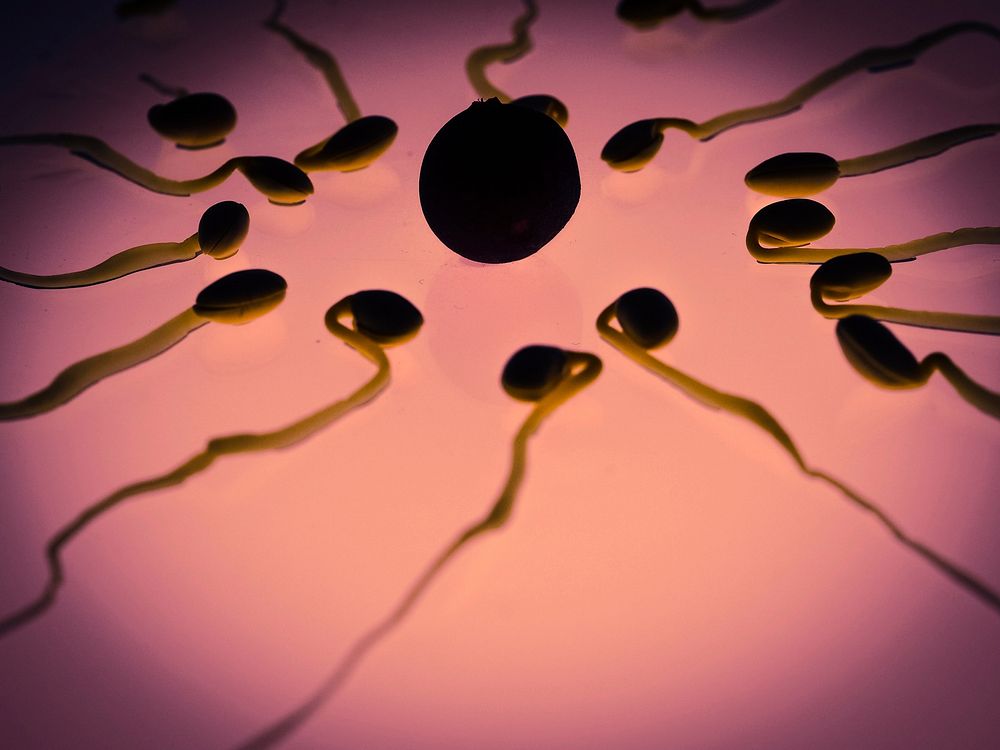
Interpreting the Test Lines Accurately
The control line confirms functionality, while the test line indicates LH levels. A positive result appears when the test line matches or is darker than the control line, indicating peak LH.
Timeframe for Peak Fertility Prediction
A positive result suggests ovulation is likely within 24 to 36 hours, marking the optimal window for conception-related activities.
4. Composition and Materials of the Test Strip
Breakdown of Key Components
Each test strip comprises a sample pad, conjugate pad, nitrocellulose membrane, and absorbent pad all encased in a protective strip casing.
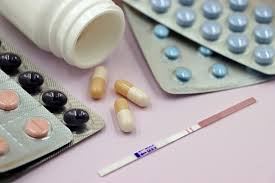
Description of Immunochromatographic Assay
The assay relies on capillary action that draws urine along the strip. The LH binds to labeled antibodies, forming a colored complex visible as the test line.
Safety and Biocompatibility of Materials Used
Materials are medical-grade and free from cytotoxic compounds, ensuring skin and mucosal safety during handling.
Latex and Allergen-Free Status
I-Sure is manufactured without latex, parabens, or common allergens, making it suitable for sensitive users.
5. Instructions for Use and Dosage Guidelines
When and How Often to Test During the Menstrual Cycle
Begin testing a few days before expected ovulation usually from day 10 to 14 of a 28-day cycle. Test daily or twice daily for higher precision.
I-sure Ovulation Kit How To Use
- Use a clean, dry container to collect urine, preferably midstream.
- Dip the test strip up to the marked line for 5-10 seconds.
- Lay the strip flat on a clean surface and wait for 5 minutes.

Ideal Time of Day for Testing
Midday or early afternoon urine is recommended, as LH is synthesized in the morning and may take hours to appear in urine.
Reading and Interpreting Test Results
- Two dark lines: Positive (LH surge)
- One line or faint test line: Negative
- No control line: Invalid test
What to Do After a Positive Result
Plan intercourse within the next 24-36 hours to maximize conception chances. Continue testing to confirm surge decline if desired.
6. Storage Instructions and Shelf Life
Recommended Storage Temperature and Conditions
Store between 2°C to 30°C (36°F to 86°F), away from sunlight and moisture. Keep in the original sealed pouch until use.
Avoiding Exposure to Moisture, Light, or Heat
Exposure to humidity or high temperatures can degrade the sensitivity of the assay. Avoid storing in bathrooms or near windows.
Shelf Life from Date of Manufacture
I-Sure strips typically have a shelf life of 24-36 months. Always check the expiration date on the packaging.
Discarding Expired Strips
Do not use expired strips as they may yield inaccurate results. Dispose of used or expired strips in household waste do not flush.
7. Common and Rare Side Effects
Overview of Safety and Non-Invasive Nature
I-Sure is non-invasive and generally free from physiological side effects, making it ideal for regular at-home use.
Skin Irritation or Allergic Response (Rare)
Handling the strip with wet or damaged skin could lead to minor irritation. Allergic reactions are rare but possible with prolonged contact.
Psychological Stress from Repeated Negative Results
False Positives or Inconclusive Results and User Error
- False positives can occur with certain medical conditions or medications.
- User errors such as misreading faint lines or testing at inconsistent times can affect accuracy.
8. Warnings and Contraindications
Not for Contraceptive Use
I-Sure is not designed for pregnancy prevention and should not be relied upon as a contraceptive method.

Contraindicated in Women with Certain Endocrine Disorders
Not Suitable for Women on Fertility Medications Without Medical Supervision
Ovulation-inducing drugs can alter LH levels and test outcomes. Professional guidance is recommended in such cases.
Situations That May Cause Inaccurate Readings
- Pregnancy or recent postpartum state
- Use of hormonal contraceptives
- Chronic kidney disease or hormone replacement therapy
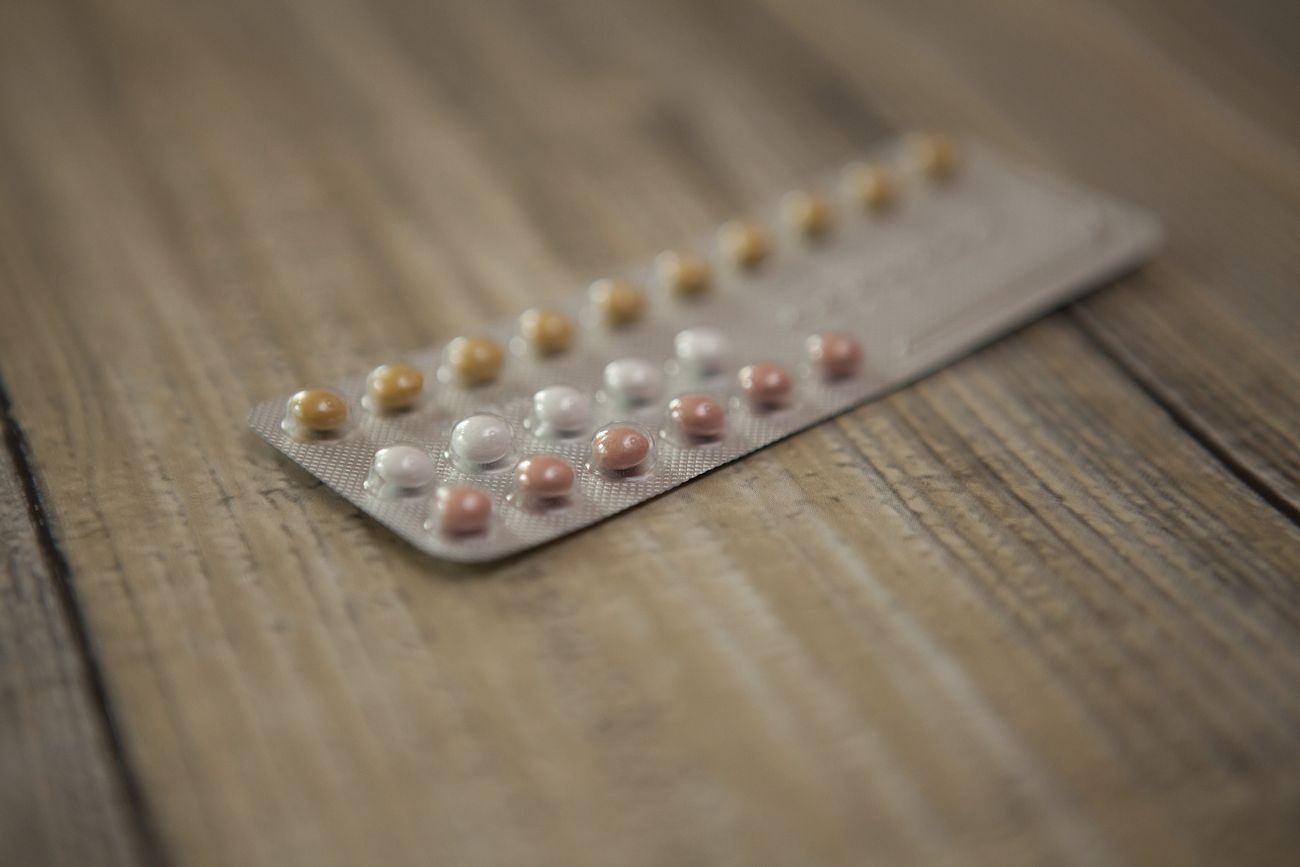
9. Important Precautions and Handling Instructions
Single-Use Only: Do Not Reuse Test Strips
I-Sure Ovulation Strips are designed strictly for single-use applications. Reusing a strip compromises the chemical reagents and distorts results, rendering the test invalid. Each strip is calibrated for a single assay, and reapplication of urine or multiple readings may lead to false positives or degradation of test sensitivity.
Hygiene Considerations During Sample Collection
Maintaining hygienic practices is essential. Use a clean, dry container for urine collection to avoid cross-contamination. Refrain from using sample cups that are exposed to soap residues, detergents, or previously stored fluids. Urine samples should be fresh and tested within 10 minutes for optimal reliability.
Avoid Using with Diluted Urine or After Excessive Fluid Intake
High fluid intake may dilute urinary LH concentrations, leading to weak or falsely negative results. For best outcomes, test during midday or early afternoon without overhydration. First morning urine is not recommended, as LH synthesis occurs later in the day.

Handling with Clean, Dry Hands to Avoid Contamination
Always wash and dry your hands thoroughly before handling the strip. Avoid touching the test membrane or absorbent area directly. Contaminants like lotions, dirt, or moisture may interfere with the assay's chromatographic function.

10. Interactions with Medications and Medical Conditions
Effects of Fertility Medications (e.g., Clomiphene) on Test Accuracy
Ovulation-inducing agents such as Clomiphene Citrate can cause premature or amplified LH surges. This may result in unexpected positive results or make timing less predictable. Close monitoring by a fertility specialist is advisable when using such medications in tandem with home ovulation kits.
Interaction with Polycystic Ovary Syndrome (PCOS)
PCOS is characterized by chronically elevated LH levels, which can lead to persistent or false positive results. Women with PCOS may find the test less effective for timing ovulation and may require ultrasound or blood hormone profiling for accurate tracking.
Hormonal Contraceptives and Recent Pregnancy Effects
Hormonal birth control suppresses ovulation and thus LH surges. Similarly, recent pregnancies can temporarily affect LH output and hormone regulation. Testing within a few weeks post-delivery or post-pill cessation may produce unreliable results.
Certain rare medical conditions such as LH-secreting tumors, premature ovarian insufficiency, or pituitary disorders can produce elevated LH levels independent of ovulation. These anomalies can trigger misleading test responses.
11. Administration in Specific Populations
Use in Elderly Women
I-Sure is generally not applicable to post-menopausal women, as ovulation ceases and LH levels stabilize at a consistently high plateau. Therefore, the strip holds no clinical utility in this demographic.
Use in Pregnant Women and Nursing Mothers
Pregnant and lactating women are not ovulating and should not use ovulation test kits. The hormonal environment during these periods suppresses the LH surge, rendering the strip ineffective and inapplicable.

Use in Adolescents
Adolescent users may experience hormonal variability as menstrual cycles stabilize. Use is not recommended unless prescribed under medical supervision for fertility assessment or hormonal imbalance. In all cases, ethical considerations, including the need for informed parental consent should be observed.
12. Overuse and Misuse Scenarios
Psychological Impact of Obsessive Cycle Tracking
While ovulation tracking can be empowering, excessive monitoring may lead to anxiety, obsession, or undue stress. Users are advised to maintain emotional balance and avoid overinterpreting test results.
Misinterpretation of Continuous Positive Results
Recurring positive results across multiple days may reflect persistently elevated LH, as seen in PCOS or other endocrine disorders. Users must recognize this as a potential signal for medical consultation rather than a cue for repetitive testing.
Using the Strip Outside the Fertile Window
Testing too early or too late in the cycle can yield irrelevant or negative results. Identifying the fertile window, based on average cycle length, is crucial for timing the tests accurately.
Complications Arising from Misuse in Irregular Cycles
Women with erratic menstrual cycles may find it difficult to pinpoint testing days. In such cases, excessive or scattered testing without clinical oversight may lead to confusion or false assurance. Supplementary methods such as follicular tracking or serum hormone analysis may be more suitable.
I - Sure Ovulation Strip FAQ
- Do ovulation test strips really work?
- How do I-know ovulation strip results?
- How do you know if your ovulation strip is positive?
- Can ovulation strips be wrong?
- Do ovulation strips confirm ovulation?
- Can I get pregnant if my ovulation test is positive?
- Can I get pregnant after ovulation?
- How to use i sure ovulation kit?
- Why is my ovulation strip positive?
- What is the discharge of ovulation?
- How many days do you ovulate?
Do ovulation test strips really work?
99% accuracy rate
How do I-know ovulation strip results?
If a pink line appears in both the C and T sections the test result is positive.
How do you know if your ovulation strip is positive?
If the line you see in the test is as dark or darker than the line in the control sample, it indicates that your body's LH levels are higher than usual, and you might be ovulating or getting ready to ovulate. If the color of the test line is lighter or fainter, it suggests that your LH levels are low and ovulation has not yet started.
Can ovulation strips be wrong?
False positives or consistent negatives can happen
Do ovulation strips confirm ovulation?
It doesn't guarantee that ovulation has occurred or will occur.
Can I get pregnant if my ovulation test is positive?
The surge in LH levels plays a role in anticipating ovulation as it indicates the readiness of the ovaries to release an egg, which is why numerous women use these tests to determine their most fertile days; a positive outcome signifies that the opportunity for conception is at hand.
Can I get pregnant after ovulation?
Yes
How to use i sure ovulation kit?
Ensure that the horizontal line does not come into contact with the urine. Take out the test strip from the sample and place it on a clean surface before checking the result after 5 minutes.
Why is my ovulation strip positive?
You are likely to ovulate in the 24 to 36 hours if it hasn't happened yet.
What is the discharge of ovulation?
The substance is transparent and elastic, with a texture similar to uncooked egg whites.
How many days do you ovulate?
1 day (12-24 hours)

